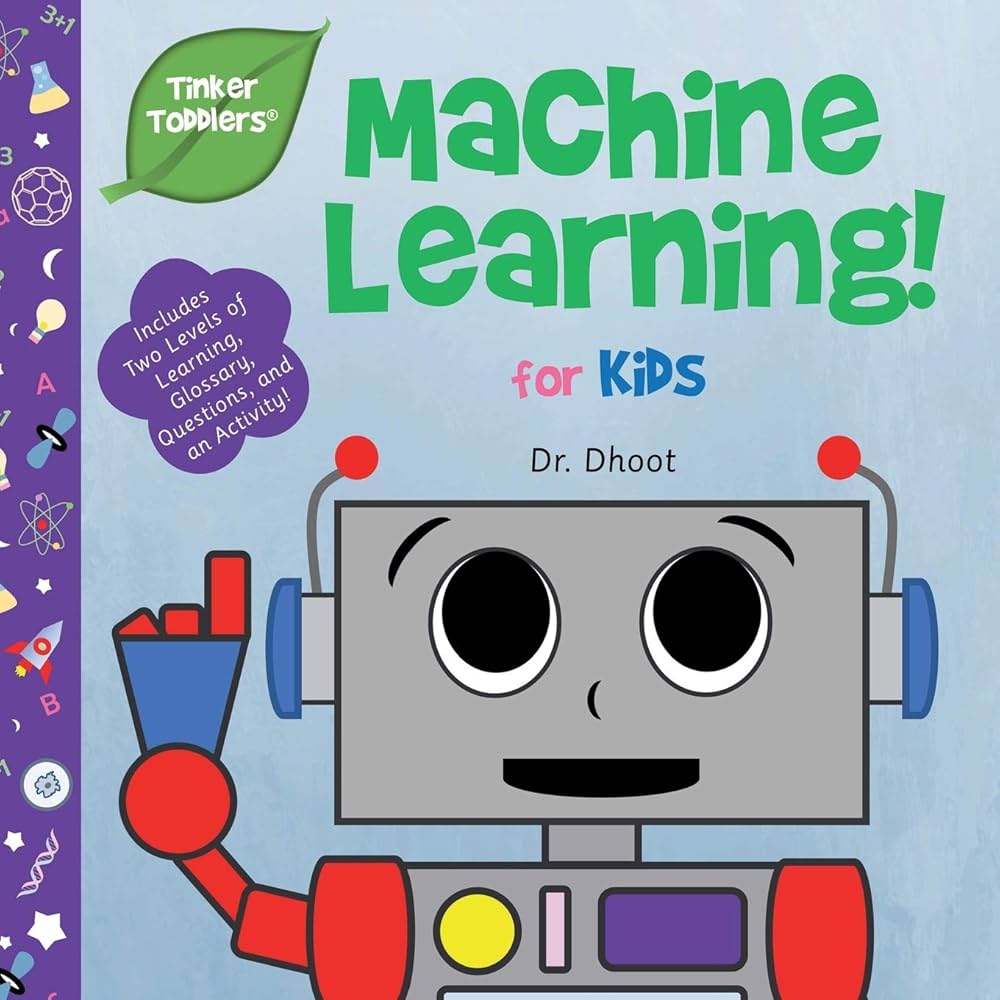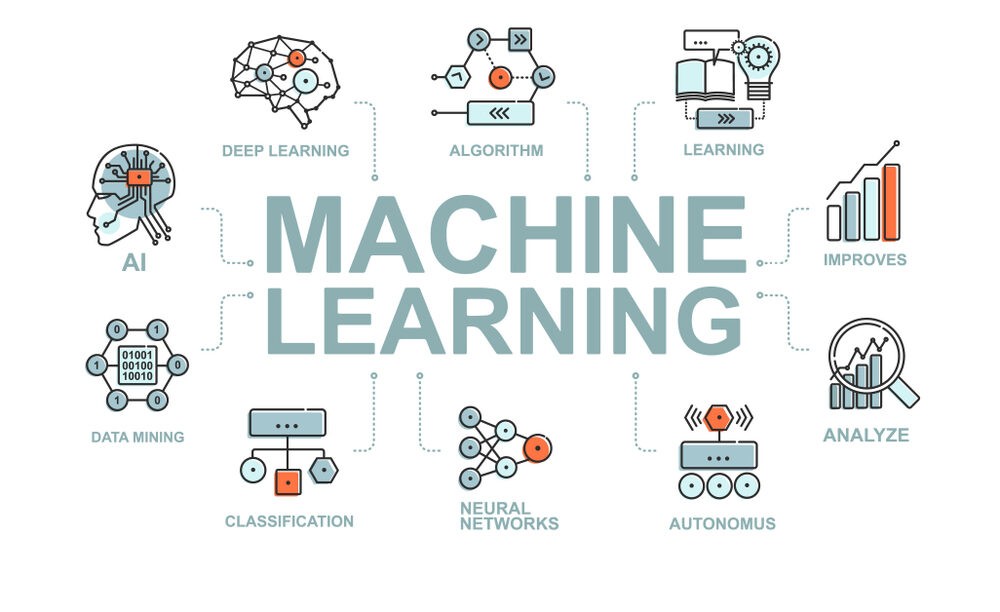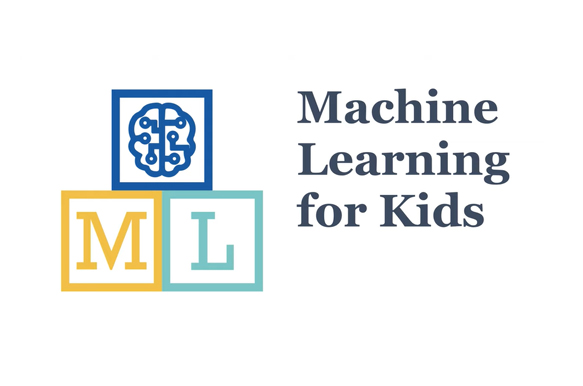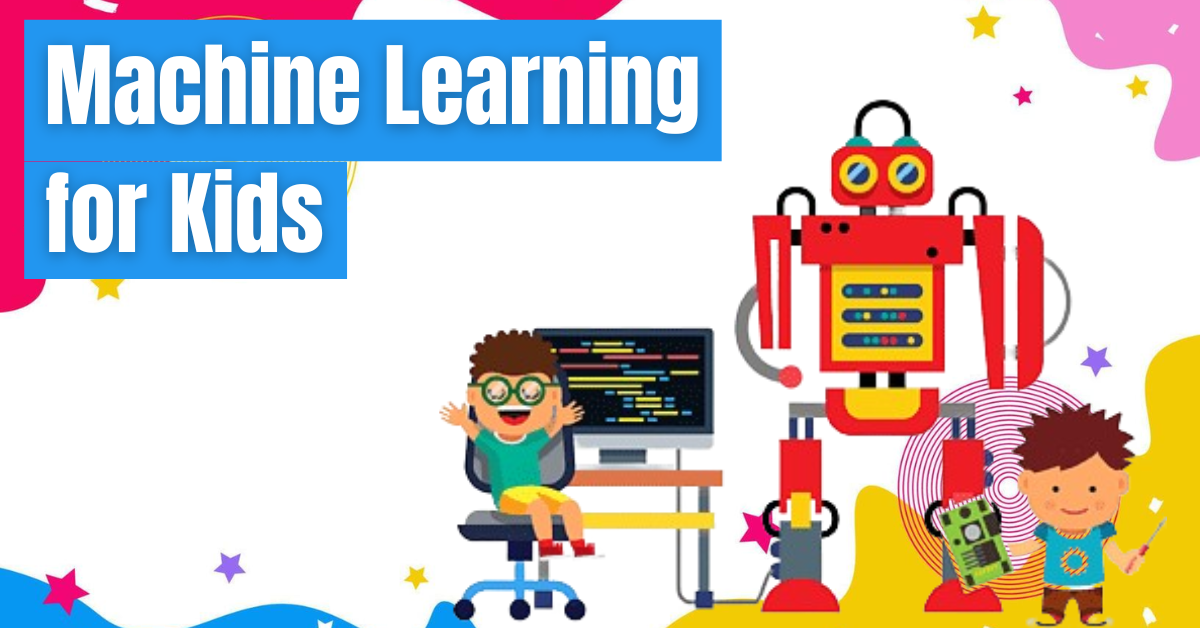Are your looking for a guide on Machine Learning for kids. If you are struggling to make sense of machine learning, good news, it’s not as complex as you might think.
This guide demystifies algorithms and artificial intelligence, showing you how they power apps, games, and virtual assistants.
Get ready to enter a space where computer science comes alive—let’s explore together!
Here are other relevant post that I think will help you in your AI discovery journey:
Table of Contents
Key Takeaways – Machine Learning for Kids
- Machine learning allows computers to get smarter over time by learning from data, and it powers many apps and devices we use every day, like Netflix and Siri.
- By exploring machine learning through fun activities, kids can improve their problem-solving and creative thinking skills. Activities include building games or creating virtual assistants.
- Learning about machine spirit prepares kids for future jobs in areas such as data science, software development, and AI research.
- It’s important to think about fairness when making AI systems. We should make sure they don’t unfairly treat people differently because of race, gender, or age.
- There are lots of resources available for parents and kids to learn more about machine learning together. This includes educational platforms and competitions that offer hands-on experience.
Basics of Machine Learning for Kids
Hey there, let’s talk about the basics of machine learning for kids. We’ll keep it simple and fun, so you can understand it easily and even try it out yourself.
Explaining Core Concepts in Simple Terms
Machine learning is like teaching a computer to make smart guesses. It learns from lots of information, or data, and gets better over time at making predictions. Imagine you’re playing a game where you have to guess if an animal is a cat or a dog based on pictures.
The more pictures you see, the better you get at guessing. That’s what machine learning systems do—they look at data (like photos) and learn patterns so they can recognize them later.
For example, when you talk to a virtual assistant like Siri or ask Alexa to play your favorite song, machine sifting through sounds use machine learning to understand your words. Or when Netflix suggests movies you might like, it’s using patterns from movies you’ve watched before to make those recommendations.
This shows that machines can learn just like we do—by practicing!
Through examples in our lives—like movie apps recommending what to watch next—we see how machines are getting smarter by learning from data.
Everyday Examples of Machine Learning
Every day, you use machine learning without even knowing it. Think about Netflix and its show suggestions. The way it knows what you might like to watch next is by learning from shows you’ve watched before.
This is machine Spirit in action, getting smarter with each choice you make.
Then there’s Apple’s Siri on your phone or tablet. You ask her questions, she answers. How does she get better at understanding what you’re asking? Again, it’s machine Spirit at work, learning how to recognize your voice and the words you use most often.
Also, consider self-driving cars that are starting to appear on roads. They can see the road and make decisions thanks to machine Spirit learned from lots of data about driving.
Even doctors are using this tech for health checks now! Systems trained in many patient records can help spot sickness early. This is a big deal because catching problems early can often make treatment easier and more effective.
All these examples – from picking movies to helping doctors and even steering cars – show how AI systems learn from experience just like humans do but much faster sometimes!

Why Kids Should Learn Machine Learning
Learning machine learning can prepare kids for future challenges. It will boost both their analytical and creative thinking.
Preparing Kids for Future Challenges
Machine learning gives you skills for solving big problems. You learn how to make computers recognize things like pictures, sounds, and words—skills that are key in today’s tech world.
By understanding machine learning, you get ready for jobs that don’t even exist yet. Think about it: jobs in data science or as a software developer need these skills.
Develops critical thinking and problem-solving skills.
You also become good at working out tough questions and coming up with your own ideas. This opens up many career paths for you—from creating smart apps like virtual assistants (Siri or Alexa) to working on huge projects in AI version of games such as Minecraft Bedrock.
Next, let’s see how fun apps can make learning about machine learning even more exciting for kids.
Boosting Analytical and Creative Thinking
Understanding machine learning can help you become better at analyzing and solving problems in creative ways. It’s like teaching your brain to look at things in new and different ways; it can help improve your thinking skills when facing challenges or coming up with exciting ideas.
For instance, take the game Rock, Paper, Scissors – with machine learning, you could create a program that learns how people play and then figure out the best strategy to win!

Hands-On Machine Learning Activities for Children
Get ready to start building your own virtual assistant like Siri or Alexa! You’ll also learn about creating a movie recommendation app and even an AI version of Pac-Man. Exciting, isn’t it?
Choosing Fun Apps and Games
You can introduce kids to machine learning through engaging apps and games such as “Swift Playgrounds” and “CodeCombat.” These platforms provide a hands-on approach to learning about supervised learning, unsupervised learning, and neural networks. Encourage your child to learn about recognizing text, images, numbers, and sounds by exploring everyday examples like the rock-paper-scissors game or creating a virtual assistant similar to Siri or Alexa. Other fun activities include building a movie recommendation app, an AI version of Pac-Man, and using math to design a sandbox game. These activities offer first-hand experience in understanding the basics of machine learning while having fun.
Developing Projects for Practical Experience
Building practical projects can help you understand machine learning better and have fun. Here are some project ideas for different ages:
- Ages 6-10: Create a game like “Guess the Animal” where the computer guesses the animal you’re thinking of.
- Ages 11-14: Design a chatbot that can talk to you and answer questions, or try making a simple image recognition program.
- Ages 15-18: Explore more complex projects like analyzing people’s feelings in text (sentiment analysis) or creating a model to predict stock market changes based on historical data.
These hands-on activities will help you grasp machine learning concepts while having an enjoyable experience.
Machine Learning for Different Children’s Age Groups
Let’s explore Machine Learning for kids of different ages.
For the older group, 15-18 years, we can introduce advanced techniques and projects that involve creating real-world solutions. For the younger ones, 6-10 years old, interactive games and storytelling can be used to explain the concepts.
Techniques Suitable for Ages 6-10
Kids aged 6-10 should start with simple machine learning activities:
- Use interactive storytelling apps that adjust the story based on the choices made.
- Introduce basic programming concepts through visual programming languages like Scratch or Blockly.
- Engage in activities like teaching a virtual pet new tricks in a game.
- Explore pattern recognition through fun games like “Guess the Animal” or “Teach the Robot”.
- Work on projects involving voice recognition to understand how virtual assistants like Siri or Alexa function.
There are also many cool books about Machine Learning for Kids. Like this one.

By starting with these techniques, you pave the way for a solid understanding of machine learning at an early age.
Techniques Suitable for Ages 11-14
Machine learning techniques for ages 11-14:
- Create simple chatbots using platforms like Scratch or Botpress to understand the basics of natural language processing.
- Introduce image recognition by building projects that identify objects in images, such as animals or fruits, using tools like TensorFlow and Teachable Machine.
- Explore game development with machine learning by creating rock-paper-scissors games that learn from the player’s patterns and adapt their strategy accordingly.
- Use virtual assistants like Siri or Alexa to demonstrate how machines recognize text, images, numbers, and sounds in everyday interactions.
- Engage in hands-on exercises involving machine learning algorithms to analyze data from sources like sales receipts, market prices, and online transactions.
Next up: “Ethical Considerations and Challenges of Machine Learning
Techniques Suitable for Ages 15-18
As an 8th grader, you want to explore advanced machine learning techniques suitable for ages 15-18. Here are some well-explained methods and skills that could interest you:
- Deep Learning: Understanding neural networks and how they process complex data such as images, sounds, and text.
- Natural Language Processing (NLP): Learning how computers understand and interpret human language in virtual assistants like Siri or Alexa.
- Image Recognition: Exploring how machines recognize text, images, and numbers – similar to the technology behind recognizing gestures in a rock, paper, scissors game.
- Predictive Modeling: Delving into building models to predict outcomes in areas such as stock prices or consumer behavior using statistical algorithms.
- Ethical Implications: Examining how machine learning can exhibit bias and ways to ensure fairness in algorithmic decision-making.
If your child uses ChatGPT, you should know if Turnitin can detect ChatGPT content.
These areas provide a glimpse of what you can expect as you advance your knowledge of machine learning at your age. Now let’s delve into why kids should learn machine learning.

Ethical Considerations and Challenges of Machine Learning
Machine learning can sometimes make decisions based on biased data, leading to unfair outcomes. It’s important to think about the ethical impact of these technologies and ensure that they are used responsibly.
Promoting fairness and considering bias in algorithms is crucial for creating a better future with machine learning.
Discussing Algorithmic Bias and Fairness
When it comes to machine learning, it’s important to talk about fairness. Algorithmic bias means that AI can discriminate against certain groups based on factors like race or gender.
This isn’t just a theoretical problem – there have been real-world examples of biased algorithms causing harm. It’s crucial for everyone who works with machine learning to understand this issue and do their best to make sure that the technology is fair for everyone.
Promoting ethical technology use is essential, especially when it comes to sensitive issues like algorithmic bias. As you learn more about machine learning, keep in mind the impact it has on society and the importance of handling data responsibly.
Promoting Ethical Technology Use
To ensure technology is used ethically, it’s important to think about fairness and discrimination when creating AI systems. Consider how the use of data affects society and handle data responsibly.
This will help make sure that technology doesn’t unfairly advantage or disadvantage certain groups of people.
Remember, ethical technology use means not using AI in a way that treats people unfairly or unequally because of their race, gender, age, or other characteristics. It involves considering the impact on everyone affected by the use of AI systems.
For instance, making sure virtual assistants like Siri and Alexa are programmed with fair treatment for all users regardless of their background.
Making ethics a part of technology design helps prevent bias and ensures everyone is treated fairly as we interact with machines more often in our daily lives.

Supporting Resources for Parents and Young Learners
Discover great educational platforms and engaging competitions. Find reliable online learning materials and join exciting events to foster young learners’ interest in machine learning.
Selecting Trusted Online Learning Materials
When selecting online learning materials, consider reputable sources such as Khan Academy and educational apps like “Swift Playgrounds” and “CodeCombat.” Follow these guidelines to ensure the materials are trustworthy and reliable:
- Look for content from established educational institutions and recognized experts in the field of machine learning.
- Prioritize platforms that provide interactive and engaging learning experiences, including hands-on coding exercises and tutorials.
- Seek out resources that offer clear explanations, step-by-step instructions, and practical examples to aid understanding.
- Verify that the materials align with the specific age group of the child and cater to their learning needs and capabilities.
- Ensure that the content promotes ethical considerations in machine learning, including discussions on algorithmic bias and fairness.
- Select materials that offer opportunities for real-world application, project-based learning, and skill development through practical projects.
- Check for reviews and recommendations from educators, professionals, or other parents to gauge the quality and effectiveness of the materials.

Engaging in Competitions and Events
When engaging in competitions and events related to machine learning, you can look for opportunities that ignite your curiosity and present real-world problem-solving challenges. Here are the ways to participate:
- Join machine learning hackathons where you can work with a team or individually to solve specific problems using coding and data analysis skills.
- Explore local or national science fairs that have categories for computer science or technology projects, allowing you to demonstrate your understanding of machine learning concepts through practical experiments.
- Participate in coding competitions organized by tech companies or educational institutions, providing a platform to showcase your programming and algorithm design abilities.
- Consider taking part in robotics competitions that integrate machine learning, enabling you to apply theoretical knowledge in building autonomous systems capable of recognizing patterns and making decisions.
- Engage in online challenges such as Kaggle competitions which offer datasets to tackle real-world issues, giving you exposure to the diverse applications of machine learning techniques.
Remember that these activities not only strengthen your understanding of machine learning but also expose you to the ever-evolving field of technology in action.
Machine Learning Careers and Opportunities for Youth
Are you interested in exploring the world of machine learning careers and opportunities for youth? Discover emerging job prospects and learn how to nurture tech interests in young minds.

Identifying Emerging Job Prospects
Machine learning is opening up exciting job opportunities for the future. Careers in data science, machine learning engineering, AI research, and robotics are all on the rise. Businesses are looking for skilled individuals who can harness the power of machine learning to drive innovation and solve complex challenges.
As a young learner keen on technology, exploring these emerging job prospects could lead you to an impactful and fulfilling career path.
The demand for professionals with machine learning skills is steadily growing across various industries. By developing expertise in this field from an early age, you can position yourself as a valuable asset in tomorrow’s workforce.
As new technologies continue to emerge, having a strong foundation in machine learning will set you up for success in the ever-changing job market.
Guiding Parents to Nurture Tech Interests
Encourage parents to explore tech interests with your children. Discuss the significance of technology in everyday life and point out how exploring tech can be beneficial for their future.
Suggest various hands-on activities that parents can guide their children through, such as coding games or building simple programs to spark interest in machine learning from an early age.
Supportive online resources… featuring trustworthy materials will aid them in guiding their children’s technological curiosity. Emphasize the importance of open communication about ethical considerations in technology, fostering healthy discussions around these topics.
By taking a step into this ever-evolving world alongside your child, you are not just nurturing their analytical skills but also gaining firsthand experience together.

Conclusion
You now have a comprehensive guide to introduce machine learning to kids in an engaging and practical way. The activities and resources provided can help children understand the concept, its real-world applications, and potential career opportunities.
By promoting ethical AI use and responsible data handling, this guide aims to cultivate values of responsibility from an early age. With clear explanations and age-appropriate techniques, kids can embark on a journey that nurtures their curiosity and critical thinking skills regarding the world of machine learning.
FAQs
1. What’s machine learning and how does it work?
Machine learning is a type of artificial intelligence that allows computers to learn from data… like recognizing text, images, numbers or sounds! It’s the tech behind virtual assistants like Siri or Alexa.
2. Who are some people important in machine learning?
Folks like Grady Booch and Dale Lane have been crucial in advancing the field of machine learning. They’ve helped us understand how machines can learn just like humans!
3. How does Amazon use machine learning?
Well, ever used Amazon Prime or watched something on Prime Video? Machine-learning helps recommend shows you might enjoy… And when you checkout with your credit card, it keeps your information safe too!
4. Is maths involved in machine learning?
Absolutely! Machine-learning involves lots of math to help predict things… Like list prices for suppliers and retailers on sites such as Amazon.com.
5. Can kids learn about machine learning?
Yes, they sure can! With a simple guide and hands-on introduction, even kids can start exploring this fascinating world.





